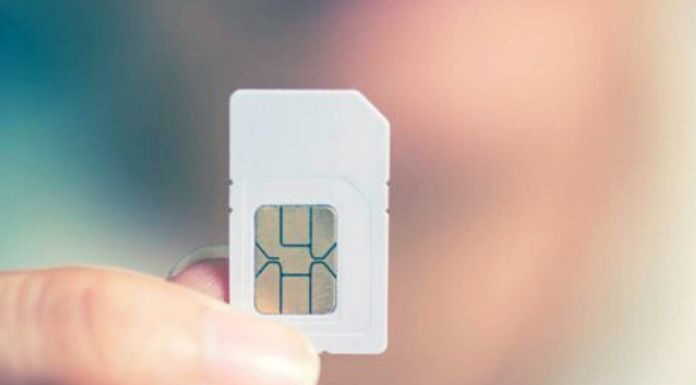SIM swap or SIM swapping is a threat in the field of cybersecurity that involves replacing a card associated with a phone number. SIM swap or SIM swapping is one of the most recent threats in IT security: an illicit activity that allows malicious people to get hold of their victims’ telephone numbers.
Several ways allow you to replace the SIM card without the owner noticing it: from social engineering operations to scams carried out in collaboration with any accomplices. Fortunately, however, it is possible to learn how to recognize the SIM swap and how to defend yourself. The advice in this regard is to learn to pay attention to sure alarm bells and change some online behaviors.
What Does SIM Swap Mean?
To understand what SIM swap is and how to defend yourself, you can start with a clear definition of the terms used—creating with SIM, a word well-known to most mobile users. The acronym SIM stands for Subscriber Identity Module and refers to an identification card that allows you to identify each subscriber to mobile telephone services uniquely. The verb ” to swap,” on the other hand, means ” to swap “: it is a valid synonym of other English verbs such as “switch” or “exchange,” but it also has a specific use in certain areas. For example, on the stock exchange, the swap refers to a particular practice: a contract to sell sums of money between parties.
SIM swap, or SIM swapping, is an illegal practice linked to exchanging a SIM card. An attacker can access the victim’s phone number thanks to the SIM swap. This kind of scam, therefore, creates a new unique correspondence between the user’s digital identity (in this case, his phone number) and his physical identity (in this case, the SIM card). SIM swap means replacement of the SIM card: it is a scam that allows access to the user’s sensitive goods and information. The SIM swap concerns the user’s IT security regarding sensitive information and tangible assets. Consider the number of services generally accessed via smartphone: email to current accounts, from cloud services to social networks or cryptocurrency wallets.
The explosion of various cryptocurrencies seems to have given new life to the SIM swapping phenomena. Today the danger is such that it has led the US FBI to talk about it publicly. Similarly, several companies specializing in blockchain and cyber security consider SIM swapping one of this historical period’s most widespread and essential threats. This is why it is essential to pay close attention to alarm bells: from problems connecting to the network of your smartphone to the inability to call or send SMS. Faced with this kind of warning, the advice is first of all to restart the device. Therefore, if the problem persists, it would be advisable to contact your customer service and explicitly ask if a SIM replacement has been made.
How Does The SIM Swap Happen
From a theoretical point of view, the SIM swap should be complicated to practice. The attacker must be able to obtain a SIM linked to the victim’s phone number without the victim noticing. At the same time, several strategies allow us to achieve this kind of result. For example, it is possible to resort to social engineering to deceive the telephone operator by pretending to be a customer. In this way, it is possible to obtain the issuance of a new SIM and give the A to the scam.
There are also circumstances in which the attacker works with the collaboration of a telephone operator: perhaps an element of customer care through which he can perpetuate the SIM swapping. Finally, there are also cases where the SIMs are issued without going through the request for an identity document. The proposal to view documents is mandatory only if the user requests a contract change or the activation of a new service. Therefore, those who request a new SIM are often not checked: an assumption that makes the life of scammers much more accessible. The same goes for those who claim to have lost their phone card.
SIM Swap: How To Defend Yourself
Unfortunately, there are currently no techniques or habits that allow a user to 100% prevent the possibility of falling victim to SIM swap. Nevertheless, several defenses can be activated to reduce the risk level significantly. The first attention is to avoid using your phone number in two-factor authentication processes that involve sending SMS. It is better to use authentication apps like Authy or Google Authenticator. Software that prevents access by malicious actors, even if they already have the phone number of the intended victim.
Alternatively, opting for systems that resort to verification by sending an email is possible. Then, to be even more secure, it is possible to equip the inbox with two-factor authentication based on the use of apps, as described in the previous paragraph. There is also hardware dedicated to authentication: from Google Titan Security Keys to YubiKey. This kind of device goes beyond the classic two-factor authentication and marries the so-called U2F ( Universal 2nd Factor ): a new standard that significantly raises IT security levels.
Finally, it is always helpful to remember some common sense tips related to your online activity. For example, it would always be good to avoid spreading sensitive information on the web: on social networks and email or private messaging. Similarly, providing access to accounts and SIMs of mobile devices (smartphones or tablets) with a PIN or passcode is good practice. In this way, an attacker will not be able to proceed with SIM swapping even if he physically comes into possession of a telephone card.
Also Read: HOW TO DOWNLOAD THE GOOGLE HISTORY


